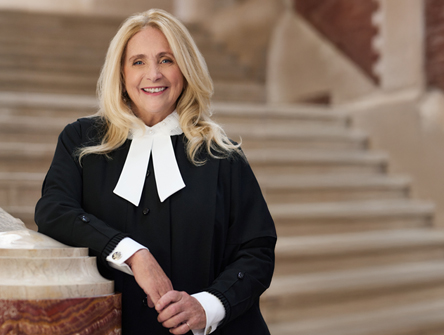A round-up of the Canadian Bar Review
A quick peek at the latest from legal scholarship on emerging issues in law.

In the latest volume of the Canadian Bar Review:
Judging the reliability of forensic science in Canada
A compelling body of scientific research demonstrates that the validity of many forensic sciences is uncertain and that courts have been ineffective in safeguarding the reliability of forensic science, write Emma Cunliffe of the University of British Columbia and Gary Edmond of the University of New South Wales. While these findings have generated some responses in the US and UK, "Canadian law and institutional arrangements have largely failed to acknowledge and respond to scientific developments."
In arguing their point, the authors point to the example of fingerprint identification evidence, which has been accepted in Canadian courtrooms for more than 100 years. However, its reliability and limitations were never subjected to serious scrutiny in a Canadian court until the BC Supreme Court trial in R v Bornyk in 2017. Tracing the course of the Bornyk litigation, the authors reveal systemic problems with the production and evaluation of forensic science evidence in the Canadian criminal legal system. They conclude: "For an adversarial criminal system that is fundamentally committed to placing a demanding burden of proof upon the state, this is a remarkable failing."
The power to exclude improperly obtained evidence in civil proceedings
Since the Charter's enactment, it has been easier for courts in criminal cases to exclude improperly obtained evidence, thanks to section 24(2). But in civil cases, there was no legislated change to the common law. And yet, trial courts over the past 25 years have begun recognizing a power to exclude evidence obtained illegally, explain law professor Peter Sankoff of the University of Alberta and JD candidate Zachary Wilson. Despite the emerging consensus that such a power exists, the authors argue that the jurisprudential foundation supporting it is "shaky" and that judges in civil matters should not be excluding evidence in this manner
The SCC on the Genetic Non-Discrimination Act: Erring in law and fact
"The opinion expressed by the Supreme Court of Canada in the Reference re the Genetic Non-Discrimination Act has, more than ever before, the potential to upset the constitutional balance of powers when enacting criminal law." That's the conclusion reached by Yann Joly, Gratien Dalpé, Hortense Gallois, and Bartha Maria Knoppers of McGill University, along with Daniel Turp of Université de Montréal. They argue that the majority's reasoning incorrectly determined both the pith and substance of the Act's contested provisions and contains serious errors in law and fact, raising scientific concerns as well. "Indeed, the cursive treatment of the facts and limited interest in promoting evidence-based policymaking by the Court is worrying at a time where science plays such an overwhelming role in all aspects of our lives," they write. "The green light given by the Court to the Genetic Non-Discrimination Act gives a false sense of reassurance to policymakers and patients." They call for a "long overdue" societal debate "to better understand the concerns and preferences" of Canadian on data protection and preventing discrimination.
Pierringer settlement agreements
There are plenty of good reasons to want to settle litigation. Parties can resolve disputes on their own terms and avoid uncertainties. They can help contracting parties preserve their business relationship. They can shield themselves from negative publicity. Promoting settlements is also in the public interest as they help the effective administration of justice. But "not all parties may be willing to settle," writes Elizabeth Adjin-Tettey of the University of Victoria. "This may be particularly problematic in multi-party disputes, where multiple defendants are allegedly jointly and severally liable for the plaintiff's loss." Hence the growing use of proportionate share agreements – known as Mary Carter Agreements or Pierringer Agreements– whereby plaintiffs settle with some but not all defendants. Proportionate share agreements. They achieve this by severing joint liability between settling and non-settling defendants, who are then only liable for their proportionate share of the plaintiffs' loss. But the problem, according to Adjin-Tettey, is that with Pierringer Agreements, in particular, plaintiffs bear the risk of under-settlement, but the benefit of over-settlement accrues to non-settling defendants. To level the playing field, the law should move toward retaining excess settlements so as not to incentivize non-settling defendants and further the public interest.
International law matures within the Canadian legal system
H. Scott Fairley of Cambridge LLP explores the role and status of customary international law within the Canadian legal system by connecting the reasons written in 2007 by Justice Louis Lebel in Hape v The Queen, a criminal law case, to the 2020 majority ruling in Araya et al v Nevsun Resources Ltd, in the civil context of international human rights-based torts:
"In the former case, while recognizing international custom as a part of Canadian common law, it was employed as an interpretive device for judicial restraint. Nevsun, however, purports to significantly expand Canadian law, utilizing international law as a sword rather than a shield, for purposes of creating domestic legal accountability for acts committed abroad in complicity with foreign sovereigns. That outreach is extended by the majority, but is curtailed by a substantial plurality of the Nevsun Court as one that exceeds the appropriate grasp of Canadian justice. Taken together, the majority and dissenting reasons for judgment constitute a benchmark precedent, setting Canadian law on a more expansive course into the hybrid sea of 'transnational law', undoubtedly, with many twists and turns to come."
Portrait-robot de la responsabilité du robot
Dans le sillage de l’adoption, en février 2017, d’une résolution du Parlement européen sur les règles de droit civil sur la robotique et d’une demande formulée devant la Commission européenne des affaires juridiques de définir des normes juridiques et éthiques applicables aux robots, une réflexion analogue doit s’engager au Québec, soutient Mariève Lacroix de l’Université d’Ottawa. S’inspirant des trois Lois qui composent l’exergue du Manuel de la robotique d’Isaac Asimov, elle pose quelques jalons de réflexion sur le statut juridique du robot avant de questionner sa responsabilité personnelle en droit privé québécois. « À l’heure actuelle, il est toutefois périlleux d’affirmer que le robot est une personne juridique, conclut-elle. Il correspond à un objet. Le robot est un artéfact, un objet multiple et multiforme, émergent et encore non parfaitement identifié… Par voie de conséquence, le robot ne peut être tenu responsable de ses actes; il y a toujours un humain derrière ses actions ».
La rédaction inclusive en droit : Pourquoi les objections ratent-elles la cible?
La rédaction inclusive s’invite dans le milieu juridique, notent Michaël Lessard, étudiant au doctorat en droit à l’Université de Toronto, et Suzanne Zaccour, candidate au doctorat en droit à l’Université d’Oxford. « Or, elles sont loin de faire consensus, constatent les auteur.e.s : plusieurs considèrent que la langue non sexiste est réservée aux usages informels et aux milieux militants, et qu’elle ne convient pas au monde du droit ». Lessard et Zaccour tentent ainsi de démystifier les enjeux du langage inclusif en droit : « Nous soutenons que la langue non sexiste doit être pleinement adoptée par les juristes dans toutes leurs communications ».


